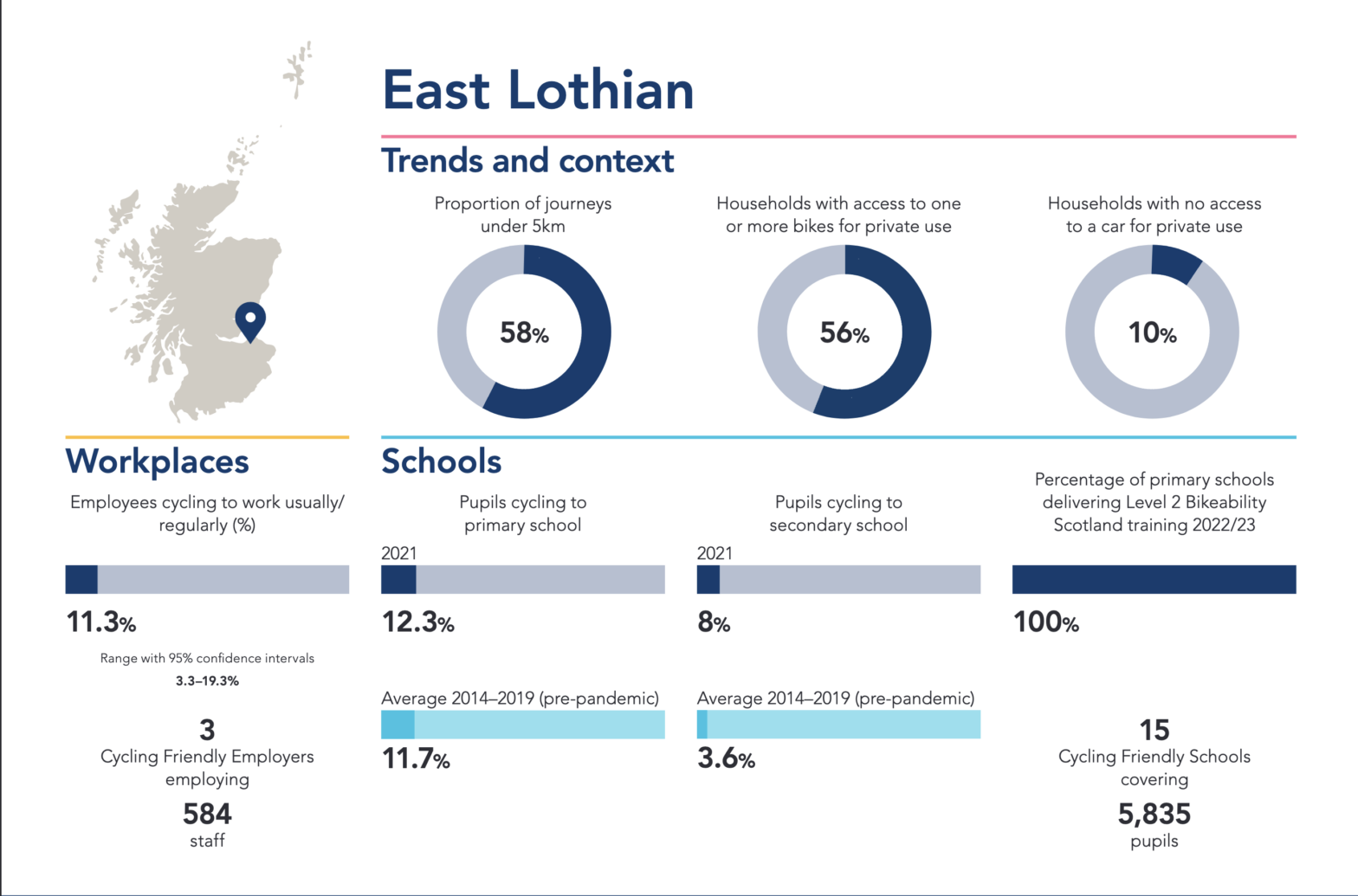The Annual Cycling Monitoring Report tracks key information on everyday cycling in Scotland. First published in 2015 the latest report provides data from January 2012 to March 2023. The national picture of cycling behaviour, road safety, access to bikes and attitudes to cycling is broken down to local authority level (East Lothian’s Primary School cycle rates top the league table!).
The headlines make for interesting reading. Only 2.3% of people cycled as a main mode of travel in 2021, but although higher than 2020 (1.5%) a number of other factors including the pandemic and change in survey methodology from face to face to telephone interview explains this. In 2021, 7.9% of people cycled to work at least regularly. This figure was 4% in 2020. In 2022, 5.4% of primary school pupils and 1.3% of secondary school pupils cycled to school. In 2012, the figures were 4.1% and 1.1%. An increase, but a very small one. Underlying participation in cycling is not that high. In 2021, 15% of people said that they had participated in at least 30 minutes of cycling within the four weeks prior, but twice as many men as women reported doing so and despite almost 50% of households having access to a bike. In 2021, the research found that around 35% of the population cycle either for transport or leisure, an increase since 2017.
Safety statistics show that the highest number of reported casualties of people riding a bicycle occur in areas with 30mph speed limits. On average between 2016 and 2020, there were 439 casualties in areas with a 30mph speed limit, compared to 106 reported in 20mph zones.
Concern about road safety remains the most significant barrier to cycling. Women were more likely to choose road safety as a main barrier. The Scottish Household Survey 2019 data found 20.9% of people don’t cycle to work due to concerns about cycling in traffic.
The official statistics data are reliably sourced from the Scottish Household Survey 2021 (SHS), Key Reported Road Casualties and Transport and Travel in Scotland research.

